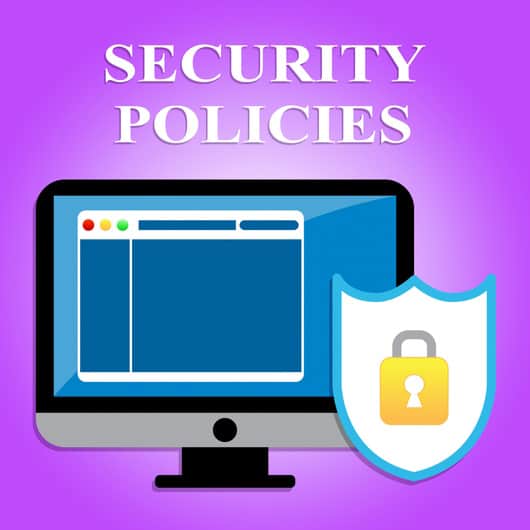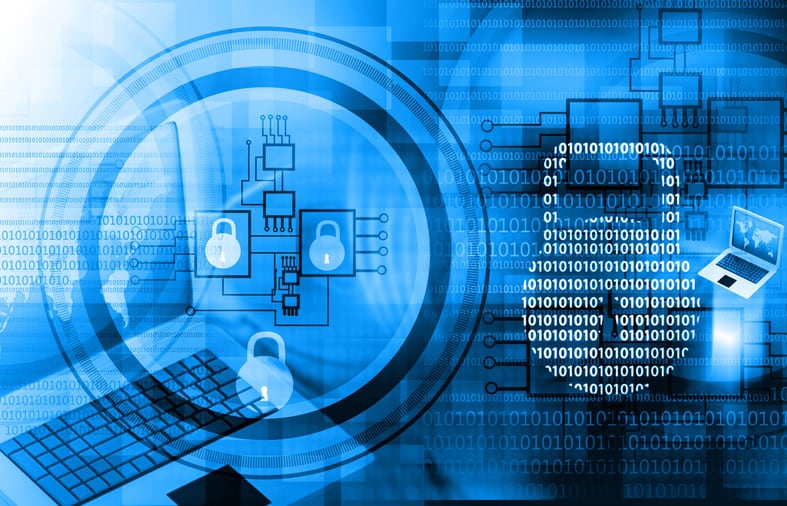In today’s interconnected world, where data breaches and cyberattacks have become more frequent and sophisticated, having a robust IT security policy is essential for organizations across all industries. An IT security policy serves as a set of guidelines and procedures that define how an organization will safeguard its information systems and data from unauthorized access, use, disclosure, disruption, modification, or destruction. It establishes the framework for managing risks associated with technology usage within an organization and sets the expectations for employees’ responsibilities in maintaining a secure computing environment. By implementing a comprehensive IT security policy, organizations can mitigate potential risks and ensure business continuity while protecting sensitive information from malicious actors.

Table of Contents
What Is IT Security Policy?
The concept of IT Security Policy refers to a set of established guidelines and protocols that aim to safeguard an organization’s information technology infrastructure from potential threats and vulnerabilities, thereby ensuring the confidentiality, integrity, and availability of critical data. An effective security policy encompasses various aspects of information security such as security controls, risk assessment, and security measures. It outlines the procedures and practices that must be followed by employees and stakeholders to protect sensitive information from unauthorized access or disclosure. The Policy encompasses a range of security measures, including cybersecurity practices, which involve the use of tools, techniques, and policies to defend against unauthorized access, data breaches, malware attacks, and other cyber threats.
What Is the Purpose of an IT Security Policy?
The purpose of an IT security policy is to outline a comprehensive set of guidelines and protocols that define the organization’s approach to safeguarding its information technology systems, data, and assets. This policy serves as a framework for establishing a secure computing environment, mitigating risks, and ensuring the confidentiality, integrity, and availability of sensitive information. By clearly defining roles, responsibilities, best practices, and acceptable use of IT resources, the policy helps to prevent unauthorized access, data breaches, cyberattacks, and other potential threats, while also promoting a culture of security awareness among employees and stakeholders.

What Are the Key IT Security Policies
IT security policies are essential in mitigating various security threats that can potentially compromise the confidentiality, integrity, and availability of data. Below are the key IT security policies:
Employee Awareness and Training Policy
Employee awareness and training programs are crucial in creating a culture of cybersecurity within organizations, as they equip employees with the necessary knowledge and skills to identify and respond to potential security threats effectively. In order to establish an effective information security program, organizations must prioritize employee awareness and training initiatives.
These programs should cover a wide range of disciplines, including the identification of common security risks, best practices for handling sensitive information, and the proper use of technology resources. By providing employees with regular training sessions and educational materials, organizations can ensure that their workforce is equipped to handle potential security breaches proactively.
Password Management Policy
One crucial aspect of maintaining a strong cybersecurity posture is managing passwords effectively. Password management plays a vital role in ensuring the overall security of an organization’s information systems. A password management policy should be included as part of the comprehensive information security policy, outlining the security requirements for creating and managing passwords within the organization. This policy should address key aspects such as password complexity, length, expiration, and the prohibition of reusing previous passwords. By implementing a robust password management policy, organizations can significantly enhance their security posture by reducing the risk of unauthorized access to sensitive data or systems.
Remote Access Policy
Remote access is a critical component of modern organizations, enabling employees and authorized individuals to connect to internal networks and resources from external locations using secure communication channels. To ensure the security of remote access, organizations need to implement robust remote access policies that outline the rules and procedures for accessing company resources remotely. These policies should be developed by security teams in collaboration with other stakeholders, taking into consideration the organization’s security posture and overall security strategies.
Bring Your Own Device Policy
The adoption of Bring Your Own Device (BYOD) policies within organizations has sparked debates on the potential risks and benefits associated with employees using their personal devices for work-related tasks. While BYOD offers certain advantages such as increased productivity and flexibility, it also presents significant security challenges that need to be addressed through a comprehensive IT security policy.
Personal devices are often more vulnerable to security breaches due to less rigorous security measures compared to company-owned devices. Consequently, organizations must establish strict guidelines and protocols to ensure the protection of sensitive data when accessed or stored on personal devices. This may involve implementing encryption technologies, requiring regular device updates and patches, and enforcing strong password policies. Additionally, organizations should consider implementing Mobile Device Management (MDM) solutions that enable remote monitoring and control over employee-owned devices used for work purposes. By striking a balance between convenience and security, organizations can harness the benefits of BYOD while mitigating potential risks to their IT infrastructure.
Network Security Policy
The network security policy establishes the guidelines and protocols for securing an organization’s network infrastructure. It outlines measures for controlling access, protecting against unauthorized intrusion, and preventing data breaches or unauthorized data access. This policy serves to safeguard the confidentiality, integrity, and availability of network resources and data while ensuring compliance with regulatory requirements.
Acceptable Use Policy
Acceptable use policies are essential in organizations to establish guidelines and boundaries for employees regarding the appropriate and responsible use of technology resources. These policies are a crucial component of an organization’s IT security program as they help to ensure that technology resources are used in a manner that aligns with the organization’s objectives and protects against potential risks.
By clearly outlining what is considered acceptable and unacceptable behavior when using technology resources, acceptable use policies help to promote a secure and productive work environment. It is important for senior management to take an active role in developing and enforcing these policies to ensure consistency across the organization. Additionally, it is crucial for organizations to regularly communicate these policies to all authorized users, provide training on their expectations, and implement monitoring mechanisms to enforce compliance with the policy.
Regular Backup Policy
Regular backup is an essential practice for organizations as it ensures the preservation and availability of critical data in the event of unforeseen incidents or system failures. Implementing a comprehensive data backup strategy is crucial to maintaining the integrity and security of computer systems. To fortify the digital fortress, organizations should adhere to a well-defined data retention policy that includes regular backups. This policy should outline the frequency at which backups are performed, specifying whether they are done daily, weekly, or monthly. Additionally, it should define whether full or incremental backups are utilized. Full backups create copies of all data on a system, whereas incremental backups only capture changes made since the last full backup.
Note:
Organizations must also ensure that multiple copies of backed-up data are stored in different locations to mitigate risks associated with disasters such as fires or floods. Lastly, regular testing of the backup process is vital to guarantee its effectiveness during actual disaster recovery scenarios.Disaster Recovery Policy
A disaster recovery policy outlines the procedures and measures to be taken in the event of a catastrophic event that compromises the organization’s IT infrastructure and data. The primary objective of such a policy is to ensure the timely restoration of critical systems and services, minimizing downtime, and mitigating potential losses. Disaster recovery policies typically include guidelines for backup and restoration processes, as well as protocols for testing and updating these procedures on a regular basis.
Common Issue-Specific IT Security Policies
Issue-specific IT security policies are crucial for addressing specific vulnerabilities and risks within an organization’s digital infrastructure. These policies are designed to ensure the protection and integrity of data and network security, as well as to establish guidelines for incident response.

Some key areas that these policies should cover include:
- Data encryption protocols to safeguard sensitive information.
- Regular network vulnerability assessments to identify weaknesses.
- Clear incident response procedures to minimize damage in case of a breach.
- Compliance with relevant regulatory requirements such as GDPR or HIPAA.
- Comprehensive risk management practices to assess and mitigate potential threats.
These measures collectively contribute towards fortifying an organization’s digital fortress and enhancing its overall IT security posture.
Best Practices for IT Security Policy
An organization can enhance its IT security posture by implementing practices that establish guidelines for safeguarding sensitive information, identifying vulnerabilities, and responding to breaches in compliance with regulatory requirements. By executing security programs based on these best practices, organizations can reduce the likelihood of security incidents and protect their network infrastructure from potential threats.

Here are the best practices to consider:
Everything Must Have an Identity
Identity management refers to the processes and technologies used to manage and secure user identities within an organization’s network. It plays a crucial role in achieving information security objectives by ensuring that only authorized individuals have access to sensitive data and systems.
To successfully incorporate identity management into an organizational policy, several key components should be considered:
Data Classification
Organizations need to classify their data based on its sensitivity level, which will help in determining the appropriate level of authentication and authorization required for accessing it.
Management Policy
A well-defined management policy should be established that outlines the roles and responsibilities of individuals involved in managing user identities, including the creation, modification, and deletion of user accounts.
Organizational Policy
An organizational-wide policy should be developed that clearly communicates the importance of identity management and sets expectations for employees regarding password complexity, account lockouts after multiple failed login attempts, and regular password changes.
Access Control From End-to-End
End-to-end Access Control is a fundamental component of effective identity management, as it allows organizations to regulate and monitor user access throughout their entire network infrastructure. By implementing end-to-end access control, organizations can ensure that only authorized individuals have access to sensitive information and resources within the entire organization.
This process involves establishing robust security processes, such as authentication and authorization mechanisms, to verify the identity of users and grant them appropriate levels of access based on their roles and responsibilities. Additionally, end-to-end access control requires adherence to organizational policies that outline guidelines for granting or revoking user privileges. This approach to computer security helps prevent unauthorized access or data breaches by limiting user permissions and continuously monitoring user activities across different systems and applications.
Consistent Policies
Ensuring consistency across your IT security policies is crucial. This means that the language, definitions, and expectations should be standardized throughout the policies. Consistency helps avoid confusion among employees and stakeholders and ensures that everyone understands the organization’s security requirements and protocols.
Flexible Policies
While consistency is important, policies should also be designed to accommodate changes in technology and evolving threats. Flexibility allows for updates and adjustments as new risks emerge or as the organization’s IT infrastructure evolves. Regular reviews and updates of policies keep them relevant and aligned with the current threat landscape.
Cross-Team Alignment
IT security is not the responsibility of a single team; it’s a collaborative effort that involves various departments and stakeholders across the organization. Ensuring alignment between IT, legal, HR, operations, and other relevant departments is essential. This collaboration helps in developing policies that consider diverse perspectives, are feasible to implement, and cover all critical aspects of security.
Clear Communication
Policies should be written in clear, understandable language to ensure that all employees can comprehend them. Avoid technical jargon that might confuse non-technical staff. Additionally, regular communication and training sessions should be conducted to educate employees about the policies and the importance of adhering to them.
Employee Involvement
Involve employees from various departments in the policy creation process. Their input can provide insights into the practical aspects of implementing policies and help identify potential gaps or challenges. You should conduct regular training to make your employees aware of security procedures.
Frequently Asked Questions
What Are the Consequences for Employees Who Violate the IT Security Policy?
Consequences for employees who violate the IT security policy may include disciplinary action, such as verbal or written warnings, suspension, termination of employment, legal consequences (depending on the severity), and loss of access privileges.
How Often Should Employees Receive Training on IT Security Policies?
Employees should receive regular training on IT security policies to ensure they stay updated and aware of potential threats. The frequency of such training may vary, but it is generally recommended to conduct sessions at least once a year to maintain a strong defense against cyberattacks.
What Steps Should Be Taken in Case of a Data Breach or Security Incident?
Steps to be taken in case of a data or security breach include immediate response, containment, investigation, and assessment of the extent of the breach. Remediation measures such as patching vulnerabilities and notifying affected parties should also be implemented.
How Often Should the IT Security Policy Be Reviewed and Updated?
The frequency of reviewing and updating the IT security policy is dependent on factors such as changes in technology, emerging threats, regulatory requirements, and organizational needs. Regular assessments ensure its relevance and effectiveness in safeguarding information assets.
Conclusion
The implementation of a comprehensive security policy is paramount in safeguarding our organization’s digital assets, and sensitive information, and maintaining the trust of our stakeholders. By adhering to the principles and guidelines outlined in this policy, we can mitigate risks, respond effectively to potential threats, and create a resilient cybersecurity posture. Regular updates, training, and collaboration among all members of the organization are essential to adapt to the evolving threat landscape and ensure the long-term success of our security initiatives. As technology continues to advance, our commitment to upholding the highest standards of IT security remains unwavering, reflecting our dedication to maintaining confidentiality, integrity, and availability across all digital operations.

